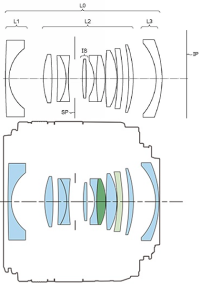You didn't like my prospective lens review?

What do you mean by negative? Who mentioned anything about negatives? Certainly not me about the wonderful 12mm f/1.8 lens!

Those are not negatives, they actually all 'features' that this modern lens is designed to have. It's 'designed to use software lens correction', which makes it smaller, lighter, and that's a sign technological progress! Why would you think otherwise? What do you have against extending lens elements on focus, and STM motors? Are you a Canon hater?

Nobody needs edge or corner sharpness except people who can afford very expensive L series lenses. Every new photographer and person on a budget should only do hiking and travel photography, and possibly only vlogging video, and therefore only need these convenient light and compact lenses. It doesn't matter that these lenses use less lens elements and cheaper plastic aspherical lens elements (but cost more than a properly optically corrected lens), because that's a superior design, being part of Canon's new strategy for lens offerings on the RF platform, and we should be eternally grateful for that.

How can I be so sure? Easy! I read all the pro-Canon posts defending the RF 16mm f/2.8 lens, and I memorised the reasons why it was good and had no limitations or shortcomings, so I know I'm right!

Negatives, no way! To think anything else is sheer blasphemy, and should be actively discouraged, because saying negative things about a camera or lens (no matter how factual) makes people who bought these lenses feel bad. Only an internet troll or Sony fanboy would do such a heinous thing to a loyal Canon buyer. We need to reward brand loyalty by affirming and validating people's buying choices at every opportunity. When they buy something new, because they believed Canon's marketing hype, and experienced buyer's remorse afterwards when the product failed to live up to real-world expectations, we need to lift their spirits and assure them that they have the best gear, so they stay loyal to the brand. We need to maintain faith in all the company's actions, no matter how confusing or questionable they may seem. In fact, it's best not to ask question, just trust, and Canon will deliver. It's not willful ignorance as some people claim, things just work better that way.

The lens is almost perfect. The only disappointment is that the aperture is too bright/wide, shame it isn't f/6.3 or darker like some of the other consumer RF lenses we've grown to love.

Who needs fast apertures anyway? Canon says we don't! It just makes the lens unnecessarily heavy. The high ISO performance of modern sensors means that we can use this lens at f/22 and ISO 102,400 and the images would still look awesome, and the fact that we've only got 2.47EV of dynamic range doesn't matter because of the superior image quality coming from the advanced sensors in the new RF camera bodies.

Besides, we have plenty of choices anyway. For anyone who doesn't like the US $900 12mm f/1,8 STM, which will sell for £1,100 in UK and $2,000 in Australia they can wait 6 years when Canon will release the L-series version for US $2,600. Any decent client should be happy to wait at least half a decade until a photographer can get the right lenses, otherwise they're being unreasonable. People can also buy the EF 11-24mm f/4L for US $2,999 and use that with an adapter, then just crop to 12mm, and blur the background a bit more in Photoshop. I can't believe why people complain so much!

<end sarcasm>



